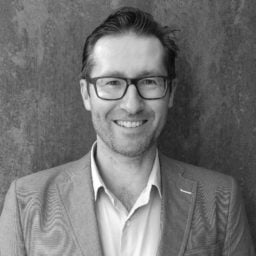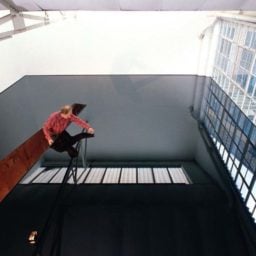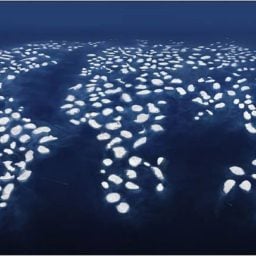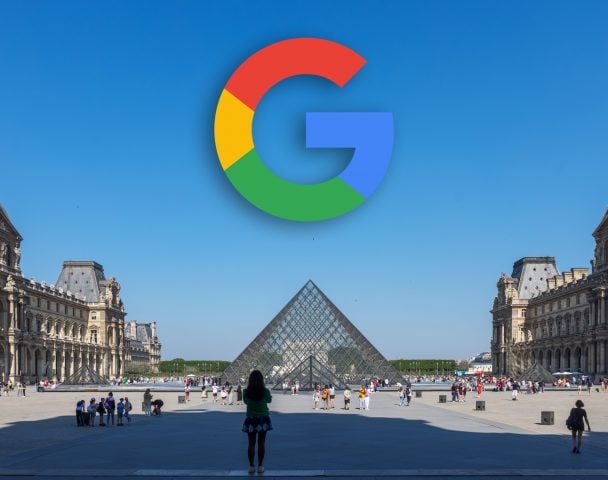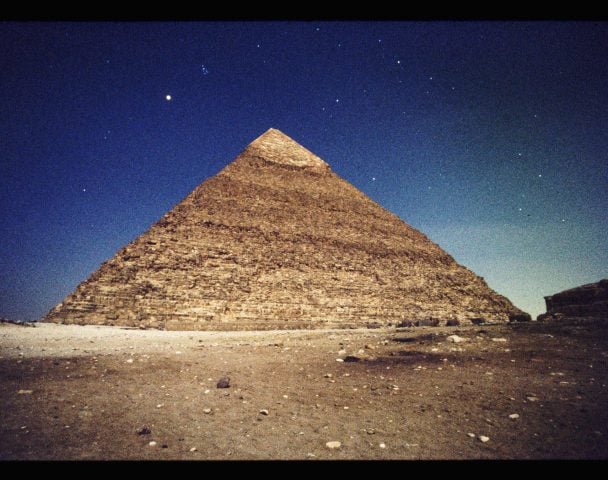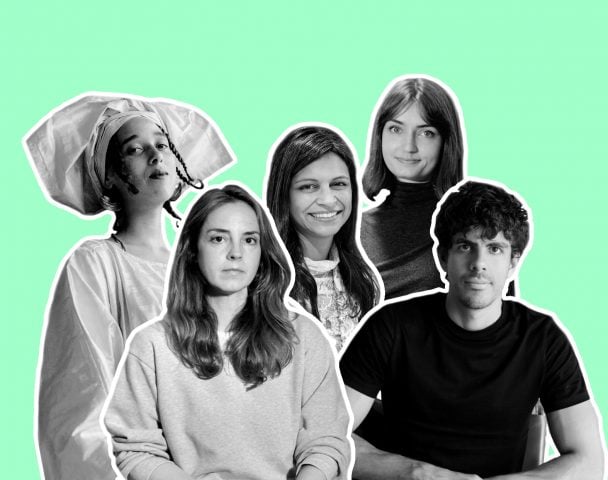Ralph Rugoff’s arrival at London’s Hayward Gallery more than a decade ago was a game changer for the Brutalist Kunsthalle besides the Thames, which is 50 years old this year. The gallery reopens on Thursday, January 25, following a major revamp with its concrete walls cleaned, terrazzo floors replaced, and most importantly, its numerous skylights uncovered. The upper galleries are now daylit, which was the original intention of its architects and their artistic advisor, the sculptor Henry Moore. (A suspended ceiling was later added because the roof leaked.)
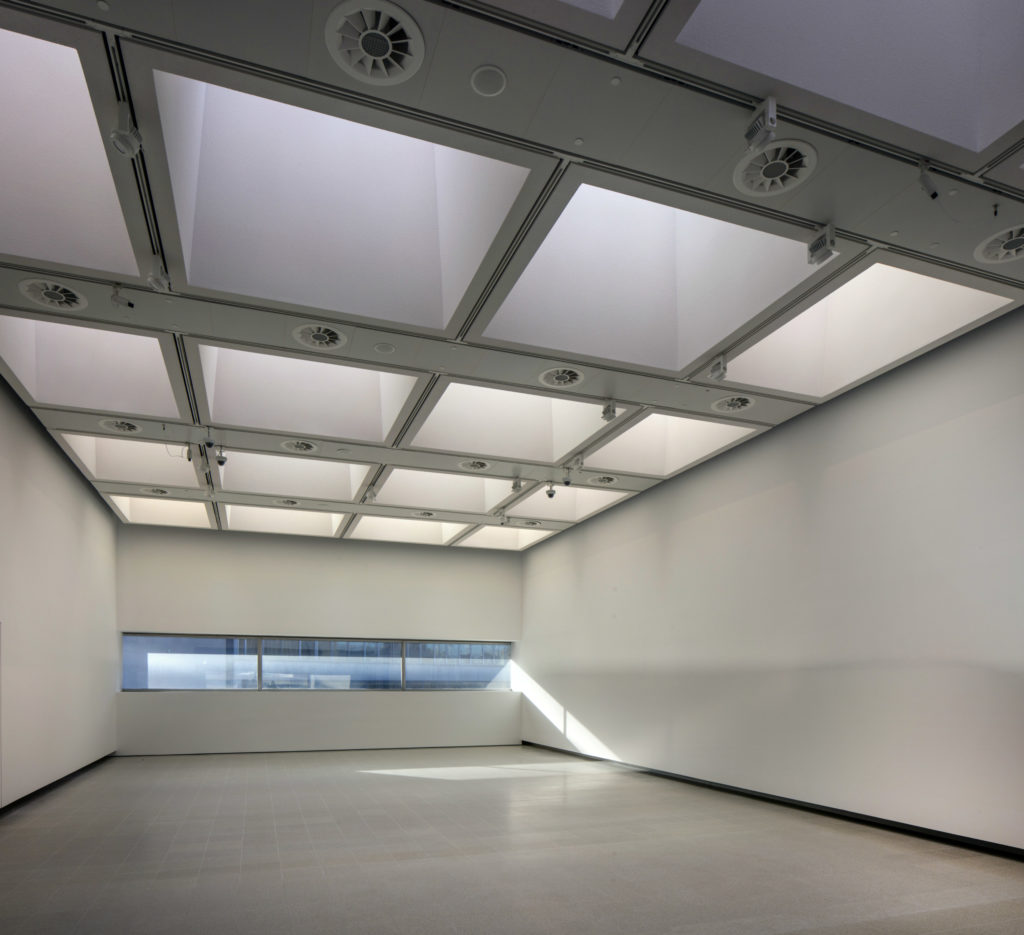
The Hayward finally has top-lit galleries. Photo by Morley Von Sternberg.
“It feels much more voluminous and airy,” Rugoff says. Introducing daylight “is fantastic.” The increased ceiling height in the upper galleries comes in handy, too: Rugoff spoke to artnet News while hanging Andreas Gursky’s photographs for the reopening show, some of which are three metres high.
The now-pristine space suits Gursky’s work. The exhibition features around 60 of the Düsseldorf-based artist’s photographs, including large-scale classic such as Rhine II, plus eight new works, such as Utah (2017).
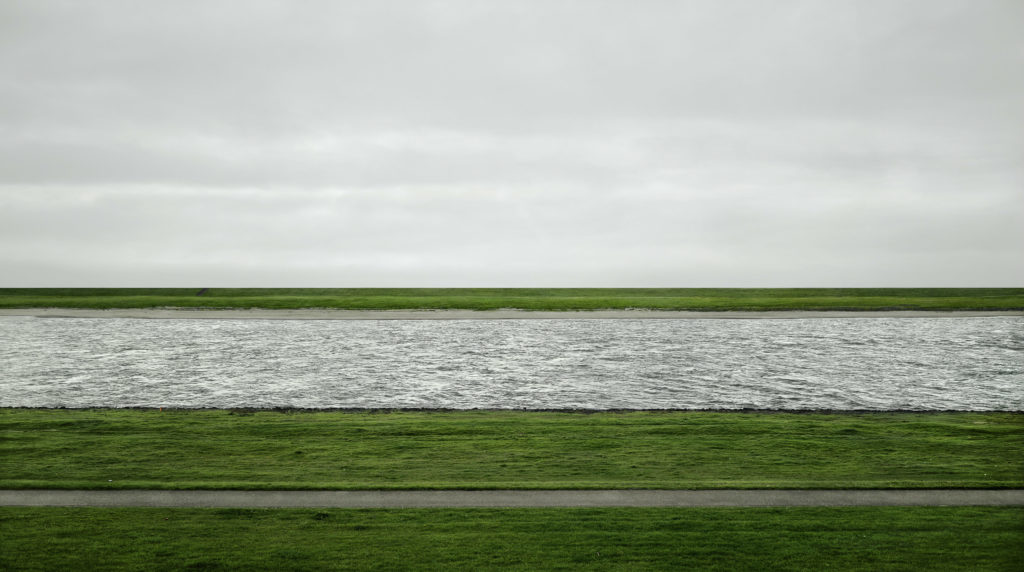
Andreas Gursky, Rhine II (1999/2015), copyright the artist/DACS, 2017, courtesy of Sprüth Magers.
“His images make the Hayward look great, and the Hayward makes his work look great,” Rugoff says. After Gursky’s show ends in April, and the German artist begins a two-year exhibition sabbatical, the Hayward will present a show of the Korean artist Lee Bul’s sculptures and installation. This will be followed by a group show in the fall to round-off the Hayward’s 50th birthday. “It will be like a love letter to the building,” Rugoff says. Participating artists are due to be announced.
Post renovation, the Hayward Gallery’s more than 60 pyramid-shaped skylights are now a work of art in their own right, at night, as a site-specific commission by the artist David Bachelor, Sixty Minute Spectrum (2017), turns them into a “chromatic clock.”
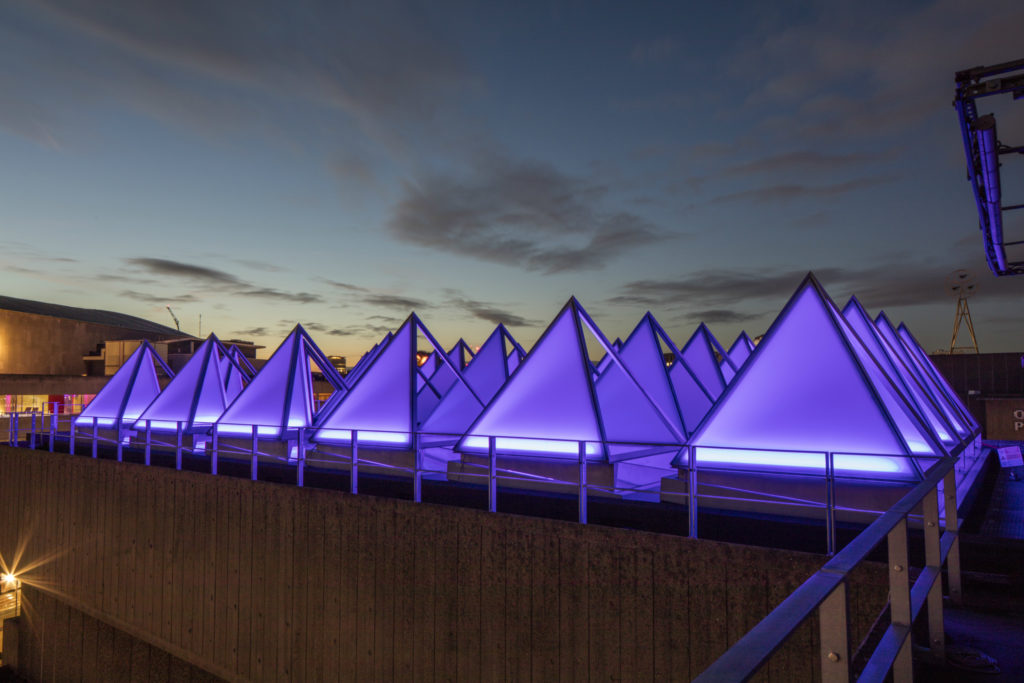
David Bachelor, Sixty Minute Spectrum (2017). Photo by Morley Von Sternberg.
However, other parts of the gallery have reached well beyond their useful life. A large chunk of the two-year-long revamp, which is part of a larger £35 million ($49 million) facelift to the Southbank Centre by Feilden Clegg Bradley Studios, was taken up removing and replacing 1968 vintage electrics and air-handling equipment. Meanwhile, the acres of exposed shuttered concrete inside the gallery beloved by Le Corbusier-inspired architects (if not the public) have been cleaned using a latex treatment, which Rugoff says is “sort of like a leg wax.”
Rugoff, who will juggle his day job in London with serving as artistic director of the 2019 Venice Biennale, took over the Hayward Gallery in 2006 when it was at a low ebb and its funding had been cut. Despite working with a fraction of the budget of his predecessors, he turned that around, using all parts of the Brutalist building for critically well-received and often popular shows. He put works, including a boating lake, on sculpture terraces, which in the past had often been closed. Carsten Höller even punched through the suspended ceiling when he added two signature slides for his show in 2015.
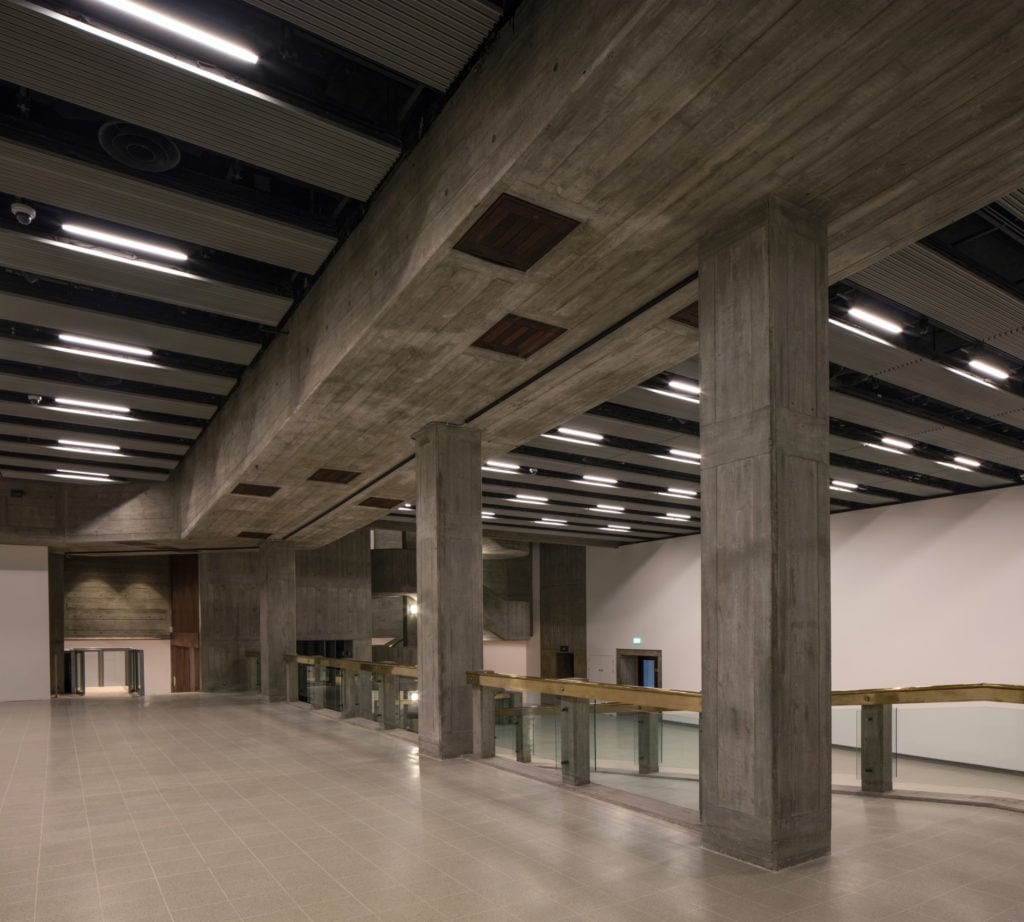
Cleaned concrete and a replaced floor inside the Hayward Gallery. Photo by Morley Von Sternberg.
While Höller’s slides were temporary, there has never been a shadow of a doubt about Rugoff’s belief in the radical architecture of the building, which some wanted to demolish. “It is more apparent than ever that it is a great building with outdoor spaces, big windows, roof terraces, all the things you see in the new Whitney in New York and the [new] Tate Modern. The Hayward had it figured out in 1968.”
“Andreas Gursky” is on view at the Hayward Gallery from January 25-April 22, 2018.






